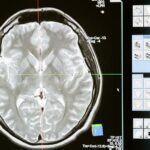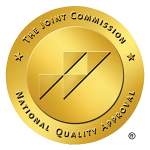
Understanding Alcohol Use Disorders | National Institute on Alcohol Abuse and Alcoholism
Image: Alcohol abuse disorders are medical conditions that cause impaired control of alcohol consumption. There’s an umbrella category for the problems people have called alcohol addiction or alcoholism. AUD can cause mild, moderate and severe neurological problems. AUD perpetuates enduring effects in the brain that lead to the occurrence of relapse.
Are you a alcoholic? Our Alcoholic Quiz Can Help You Find Out
Over 953,000 Americans have lost their lives because of excessive alcoholic drinking. 1. The United States has approximately 13 million adult adults with alcoholism. Do people think you’ve had excessive alcohol, or a lot of it, because of the stress or lack of sleep? We’re going to go over some of the key facts about drinking disorder.
What is alcoholism and alcohol use disorder?
Most likely, you hear the phrases “alcoholism” or “alcohol abuse disorder” interchangeably. However they actually describe two different things that affect alcohol consumption.
Alcoholism refers to an individual that has severe alcohol dependency that causes severe psychological problems. However, these words have not been recognized as diagnosing entities.
Rather medical professionals refer largely to alcoholics as alcohol relapse or alcohol abuse disorders. Alcohol use disorders are another diagnostic condition in the DSM-V.
Treatment options available
Different people need treatment for alcohol addiction disorder. Treatment may include in-hospital stay in the home, short interventions in outpatient facilities, or individual or group counseling.
The primary goal in treating addiction though is to reduce it by decreasing drinking and improving life’s quality. A number of treatments may begin in a detoxification phase supervised. This procedure takes place typically in a hospital, or in a hospital. Psychotherapy is also possible, but you need to get treatment.
Is alcohol a problem? Warning signs of alcoholism and alcohol use disorders
The culture in our society always promotes drinking in some way so that you can not understand why you drink too much. Tell me the best question I should ask when attempting to get drunk? If you or someone you love has experienced these signs then you should seek advice about how to deal with alcoholism symptoms. The symptoms can vary widely from one individual and it is important that someone seeks out outside advice if they are concerned that they might have these problems.
Tell me the symptoms of AUD?
AUD can cause serious mental disorders if the patient is in an AUD-like state and the condition is severe unless they are able to control their symptoms. Severity relates to a person’s symptoms by meeting several criteria: mild (3–3) moderate (4–5) severe (6 – 5 criteria) The healthcare practitioner can ask these questions in order to identify the symptoms. What are your symptoms this year? The bigger the symptoms, the more urgency is required for change.
The symptoms of alcohol withdrawal
When you stop smoking alcohol, it can cause withdrawal symptoms. Symptoms of alcohol withdrawal vary greatly between very minor and very serious. The severity of withdrawal symptoms depends upon a variety of factors like the amount of drink and time that the drink took. Some of these symptoms may be present within 6 hours of stopping drinking. These include trembling and vomiting, headaches. Symptoms can be hallucinations, seizures or delirious symptoms.
Tell me the purpose of this alcohol use disorder quiz?
Below are an example of life events affecting those with alcohol addiction. Tell me the frequency with which this challenge has occurred. Symptomatic changes can occur if symptoms have dissipated more than three days after they start recurring. If any dissipation was over one year ago this disorder could be restored to full health. Alcohol dependence varies primarily by alcohol consumption, according to AUD diagnostic criteria.
Tell me the difference between being a heavy drinker and an alcohol addict?
In the United States, heavy drinking equates to consuming two or fourteen beverages per day. Heavy drinking can be seen as drinking up to one alcoholic drink daily or more than seven drinks a week. In addition binge drinking refers to drinking lots of alcohol at the same time in an hour. For males the binge drinking occurs when the drink is five alcoholic drinks in 2 hour intervals. Women drink four drinks two hours a day.
Tell me the risk of alcoholism?
There are numerous health risks associated with alcoholic use disorder. Short term risk is essentially a risk when drinking in an unplanned and uncontrolled way. Even despite your nightly absence, there’s no guarantee of future damage and you’re still at risk. Long-term risks from excessive alcohol abuse include: Knowing whether drinking is under control will help you determine whether you may be vulnerable.
The risk for females in this group is higher than that of males. Genetics and family history of alcohol problems. Genetics play a role, with hereditability approximately 60 percent; however, like other chronic health conditions, AUD risk is influenced by the interplay between a person’s genes and their environment.
The symptoms of alcoholism
Alcohol abuse disorders develop slowly. Because the drug sneaks up onto the person it affects, it becomes more frequently frequent and more difficult to drink when it’s not regularly consumed. Is drinking dangerous for people with alcoholism? If you are struggling with a drinking problem, learn how to identify the problem and what it is that it is that is. Tell me the symptoms of alcohol abuse.
Is this Alcohol Use Disorder Quiz accurate?
These questions are not diagnostic. Mental health issues are usually treated by an experienced psychologist. Psycom thinks that assessment may prove an excellent first step towards treatment. It can help start conversations about problems drinking in the presence of friends who might be interested in you. We value your privacy. The entire survey was anonymously collected.
Alcoholic quiz
The quiz uses the AUDIT Alcohol-use Disorders Identification Test, which aims to assess alcohol-using and alcohol use disorders using standardized testing. You shouldn’t consider results to be diagnostic. You could instead use this tool to determine how much you drink. Consult the physician for a thorough diagnosis.
What increases the risk for AUD?
Alcohol can cause some health problems, because it is dependent on the kind of alcohol you are drinking. Alcohol misuse includes drinking excessively in the past and resulting in increased risk of AUD. AUD is influenced by several other things, these include:
AUD can benefit from various treatments. One size does not fit all and an individual’s method of treatment might not suit everyone. Treatment is available inpatients and outside hospitals and consists of special programs, therapists, and doctors.
What are different types of alcohol?
Although every individual is unique, there are ways to separate the alcohol from five distinct categories. Please examine each subtype and find out how diverse people with alcohol use disorders are.
Young Adult Subtype
Almost half of Americans have alcohol abuse and about 80% are young adults. Although some people here drink less often than most people do, it’s common for these individuals to binge on alcohol during this process. These individuals typically come in families that lack a significant percentage of alcohol addiction disorders.
Functional subtypes
Functional Alcoholics are one of the hardest types to identify because these people don’t fit all these stereotypes. Some people will deny the addiction and believe the truth. Most people who work are stable families with a successful life. The subtype of alcohol addiction is about 15% among American citizens.
Chronic Severe Subtype
Sadly, chronic and severe drinkers remain the least commonly used form of alcoholism. They usually start drinking early. Generally they have behavioral issues that can cause addictions. Several million people in this country have suffered from multigenerational alcoholism.
Some 5% of people in this category suffer from psychosocial personality disorder or depression. It’s not unusual in this subtype for individuals who exhibit three behavioral traits such as repeated gang activities, lack of respect for others, regular assault, or fighting.
Intermediate Familial Subtype
These subtypes of those with alcoholic use disorder typically work and nearly half originate from families with alcoholic parents. Most people with these types experience clinical depression.
Mental Health Services Administration
The Substance Abuse and Mental Health Services Administration (SAMHSA) offers a free, confidential, 24/7 helpline to access treatment information, in English and Spanish.
Stop Drinking
During the past year, how often have you found that you were not able to stop drinking once you had started? Never Less than monthly Monthly Weekly Daily or almost daily.
During the past year, how often have you failed to do what was normally expected of you because of drinking? Never Less than monthly Monthly Weekly Daily or almost daily 6.
Addiction Treatment
You are not alone. You deserve to get help for alcohol addiction. AAC is an industry leader in addiction treatment. Our team of top medical experts specialize in dual diagnosis treatment and are committed to ensuring that each patient is treated as an individual.
Excessive Drinking
There are two different types of excessive drinking . One is known as heavy drinking and the other is known as binge drinking. Heavy drinking refers to how much a person drinks throughout a week: How Can You Tell the Difference Between Being a Heavy Drinker and an Alcoholic?
Diagnostic And Statistical Manual
AUD is determined using criteria found in the Diagnostic and Statistical Manual of Mental Disorders (DSM-5) of the American Psychiatric Association. A problematic pattern of alcohol use, causing significant impairment or distress, must be established over a 12-month period.

How Much Alcohol
My Drinkaware Self-assessment test Are you drinking too much? Many people don’t always know how much alcohol they drink and whether their drinking could have any impact on their health. Our alcohol self-assessment can help you identify if the amount you drink could be putting your health at serious risk.
Drinking at an early age. A recent national survey found that among people ages 26 and older, those who began drinking before age 15 were more than 5 times as likely to report having AUD in the past year as those who waited until age 21 or later to begin drinking.
Healthcare Provider
Was it because you think that you may have a problem with alcohol ? Has your drinking pattern changed lately and you are concerned about the change? If so, you may want to mention it to your healthcare provider and perhaps get a professional assessment. Or, you just might what to cut back on your drinking and see how that change impacts you.
Talk therapy may also be helpful. Article Sources American Psychiatric Association. Desk Reference to the Diagnostic Criteria From DSM-5.
In the past year, have you experienced withdrawal symptoms when not under the influence of alcohol, such as nausea, sweating, trouble sleeping, a racing heart, sweating, restlessness, or shaking? Yes No Somewhat Enter your email below to receive the free Psycom mental health eNewsletter.
Family Members
It can also be a way to start a discussion about problem drinking with friends or family members whose behavior around alcohol concerns you. Your privacy is important to us.
The National Institute on Alcohol Abuse and Alcoholism’s guide offers signs of a problem, types of treatment and health care providers that can help, and listings of support groups and informational resources. Find an Alcoholics Anonymous chapter near you.
- Xanax Bars - January 24, 2023
- What are the 12 Steps of AA? - January 22, 2023
- Is alcoholism genetic? Top harm minimization strategies - August 2, 2022









